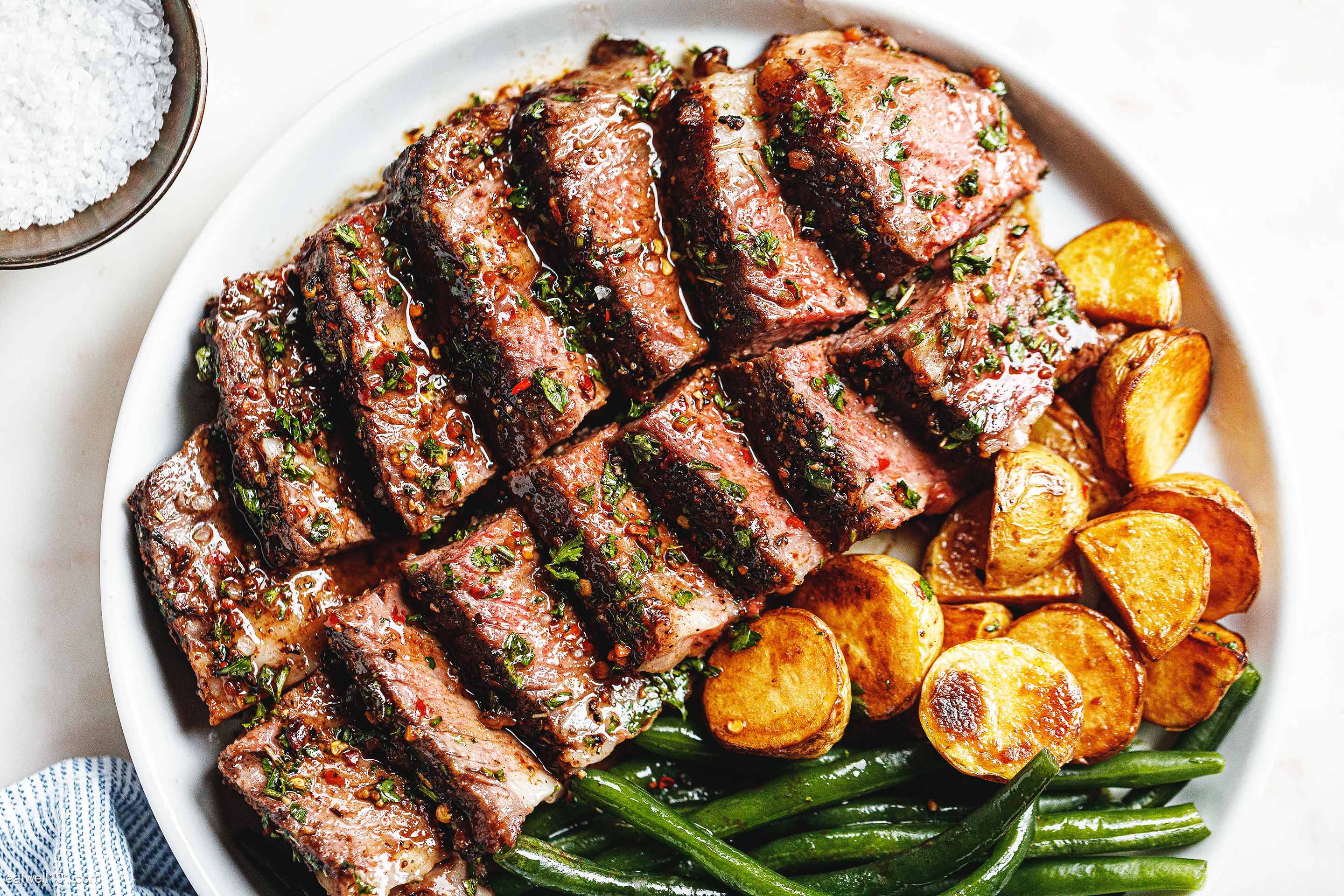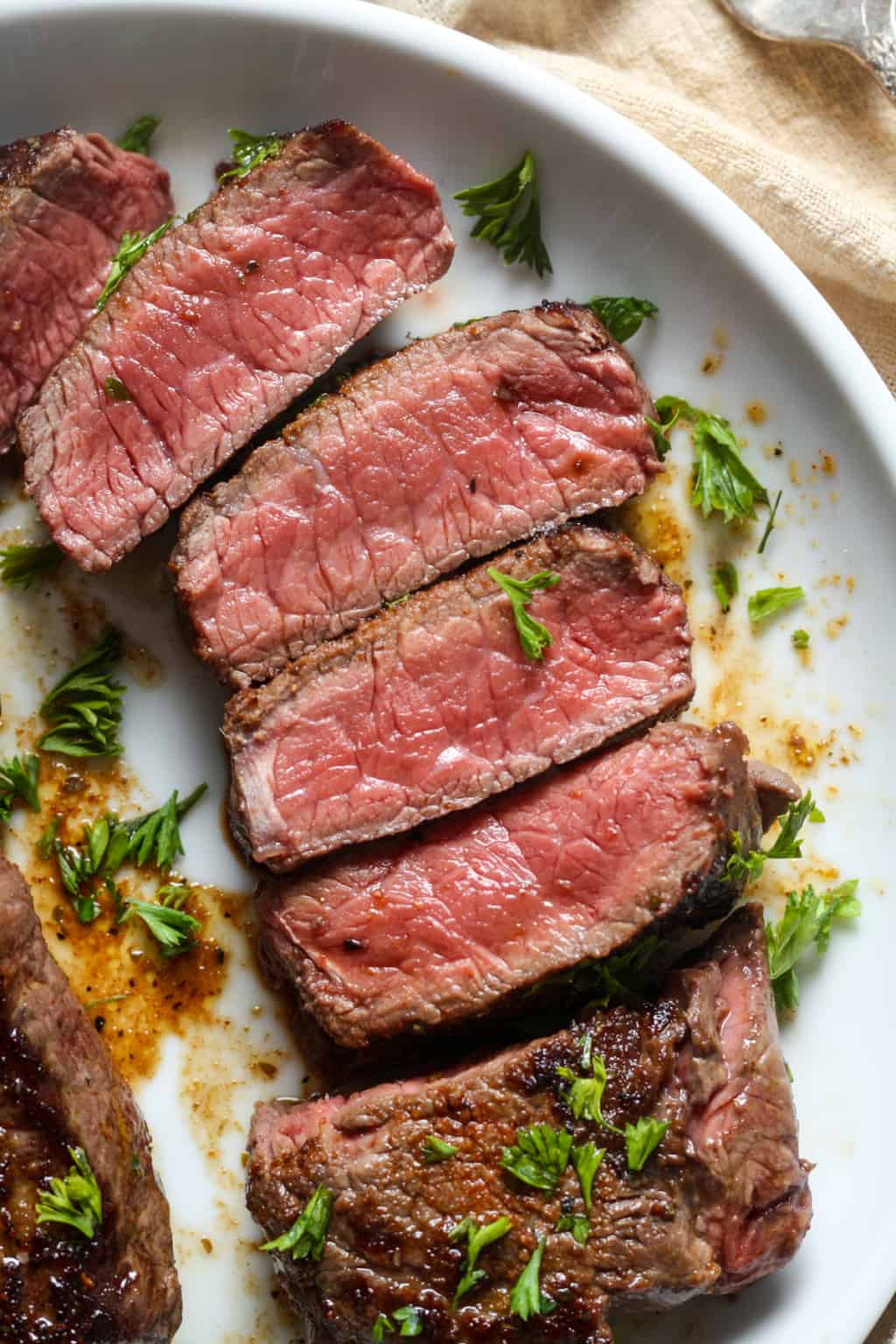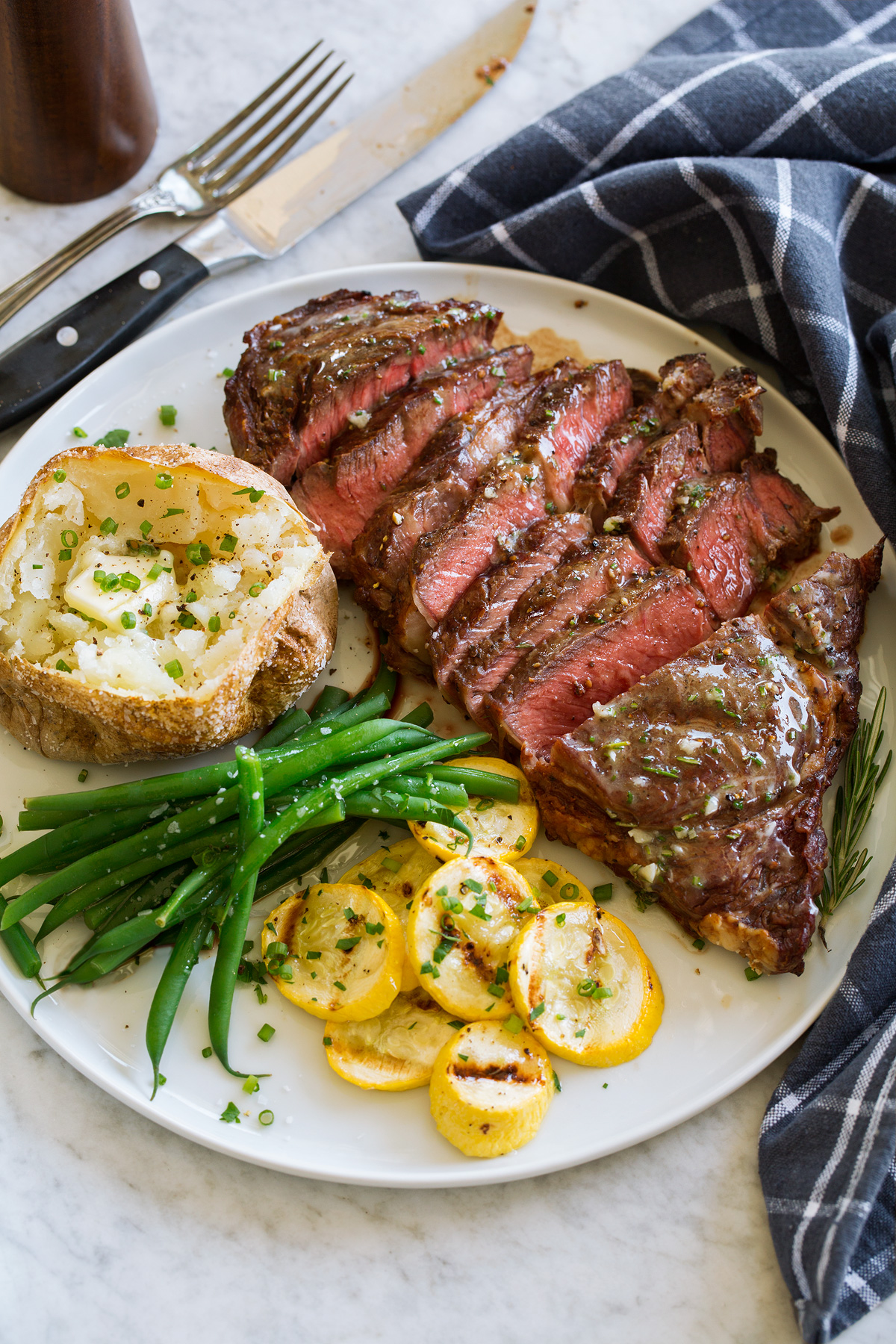There's something truly special about a steak that's cooked just right, a piece of meat that offers a tender feel and a wonderful taste with every single chew. Many folks, you know, really enjoy their steak prepared to a specific level of doneness, and for a good number of people, that means aiming for a medium rare outcome. This particular way of preparing beef is, in some respects, often seen as the very best way to experience a steak, bringing out flavors and textures that are simply delightful. It's almost as if the meat itself sings when it hits that ideal point.
Getting your steak to that preferred state, especially the much-loved medium rare, really comes down to a few key things, particularly the inside warmth of the meat. Knowing the exact warmth to look for can make all the difference, changing a good meal into something truly memorable. It’s not just about how it looks on the outside, but what’s happening on the inside, where all the magic, you know, happens. A bit of knowledge about warmth levels can help you make sure each piece of meat turns out just as you like it, every single time.
This discussion will, you see, walk you through the specifics of achieving that perfect medium rare warmth for your steak. We’ll talk about what that warmth means for the meat, some helpful approaches to cooking, and a few good pointers to help you get there. It’s all about making your cooking efforts more successful, so, you can enjoy a really great steak at home. We’ll also consider different ways to cook your steak and which cuts might be best suited for this popular level of doneness.
Table of Contents
- What's the Big Deal with Steak Medium Rare Temp?
- Why Aim for a Specific Steak Medium Rare Temp?
- How Do You Get to That Ideal Steak Medium Rare Temp?
- What Tools Help with Steak Medium Rare Temp?
- Are All Steaks Good for Steak Medium Rare Temp?
- What About Cooking Methods for Steak Medium Rare Temp?
- Can Steak Medium Rare Temp Be Achieved in the Oven?
- Is Reverse Searing the Best Way for Steak Medium Rare Temp?
What's the Big Deal with Steak Medium Rare Temp?
You might wonder, you know, what makes the medium rare warmth so special when it comes to cooking a piece of beef. It’s a point of preparation that many chefs and home cooks alike consider the very best for a number of good reasons. When a steak reaches this internal warmth, somewhere between 130°F and 135°F, it really shows off its best qualities. The meat keeps a good amount of its natural juices, making each piece feel wonderfully moist and easy to chew. This is, basically, what people are looking for in a really good steak.
The inside of a steak cooked to this warmth usually shows a lovely, deep pink color, stretching from the very middle almost to the edges. This visual sign is, you know, a strong indicator of its perfect preparation. It’s not just about how it looks, though; the feel of the meat is also at its peak. It has a slight give when you press on it, a softness that tells you it’s going to be a pleasure to eat. This particular warmth allows for a delightful experience, balancing tenderness with a full, beefy taste. It’s, arguably, a real sweet spot for steak lovers.
Beyond the look and feel, there's a practical reason why this warmth is so popular. The small bits of fat that run through the meat, often called marbling, get a chance to soften and melt at this temperature. This process, so, adds a lot to the overall taste, spreading that rich, beefy flavor throughout the piece. It’s this combination of juicy texture, pleasant pink color, and deep flavor that makes the steak medium rare temp a truly sought-after result for many who enjoy cooking and eating beef.
Why Aim for a Specific Steak Medium Rare Temp?
Why bother, you might ask, with such precise warmth levels when cooking your beef? It seems a bit much, perhaps, to worry about a few degrees here or there. However, aiming for a specific warmth, like the steak medium rare temp, is actually quite important for getting the most out of your meat. It’s all about consistency and making sure that every time you prepare a steak, it turns out just as you hope. Without a target warmth, it’s, you know, more of a guess, and the results can be quite varied.
When you cook meat to a particular warmth, you’re controlling how the fibers within the meat change and how the juices are held inside. If you go too far, the meat can become dry and tough, losing that pleasant feel. If you don't go far enough, it might not have the right texture or be quite as flavorful. So, having a target warmth like the one for medium rare helps you hit that sweet spot where the meat is wonderfully tender and full of its natural liquids. This approach, you see, takes the guesswork out of cooking.
Using a warmth guide, or a simple chart, makes this whole process much easier. It gives you a clear goal, removing the uncertainty that can sometimes come with cooking. This way, you can feel more sure about your cooking, knowing that you’re working towards a proven result. It really helps, in a way, to get great outcomes every single time, making your cooking efforts more rewarding. The steak medium rare temp isn't just a number; it's a path to a better meal.
How Do You Get to That Ideal Steak Medium Rare Temp?
Achieving the ideal steak medium rare temp isn't as hard as it might seem, but it does require a little attention and, you know, a good sense of timing. The main idea is to get the outside of the steak nicely browned while the inside slowly warms up to that perfect pink center. One common approach involves placing the steak on a hot surface, like a grill or a pan, and letting it cook for a certain amount of time on each side. This initial cooking step helps to create a pleasant crust.
For many cuts of steak, giving it about three minutes on one side before turning it over for another three minutes is a good starting point. This isn't a hard and fast rule for every single steak, of course, as thickness and the heat of your cooking surface play a part. But it gives you a general idea of how long to begin. The goal here is to build up that lovely color and taste on the outside while the inside starts its journey towards the desired warmth. It’s, basically, a dance between external crispness and internal tenderness.
The real secret, however, to hitting that precise steak medium rare temp is to use a tool that can measure the warmth inside the meat. Guessing by eye or by feel can work sometimes, but for consistent, perfect results, a warmth reader is your best friend. This simple tool takes away all the uncertainty, telling you exactly when your steak has reached that 130°F to 135°F range. It means you can take the steak off the heat at just the right moment, ensuring it’s exactly how you want it. This way, you know, you're always on target.
What Tools Help with Steak Medium Rare Temp?
When you're aiming for that just-right steak medium rare temp, having the proper helpers at hand can make all the difference. The most important tool, you know, is definitely a reliable warmth reader. These devices come in various forms, from simple ones with a dial to more advanced digital versions that give you a quick and precise reading. Using one of these means you don't have to guess whether your steak is ready; you'll have a clear number telling you it's perfect.
Beyond the warmth reader, a good, heavy cooking pan, like a cast iron one, can be incredibly useful. These pans hold heat very well and distribute it evenly, which helps in getting that lovely, browned outside on your steak. If you're cooking outside, a grill with good heat control is also, you know, a fantastic helper. The even heat from a grill helps to cook the steak consistently, letting you focus on getting that internal warmth just right for your steak medium rare temp.
And, of course, don't forget the simple tools like tongs for turning your steak. Using tongs helps you avoid poking the meat with a fork, which can cause those precious juices to escape. Keeping the juices inside is, you know, a big part of what makes a medium rare steak so juicy and flavorful. So, while the warmth reader is key, these other helpers also play a good part in making sure your steak turns out wonderfully every time you cook it.
Are All Steaks Good for Steak Medium Rare Temp?
It's a good question to ask whether every kind of beef cut is equally suited for achieving that wonderful steak medium rare temp. While many cuts can be cooked to this level of doneness, some pieces of meat truly shine when prepared this way, while others might be better suited for a different approach. The differences often come down to the amount of fat running through the meat, known as marbling, and the overall tenderness of the cut itself. Some cuts, you know, just lend themselves better to this.
For those just starting out, or even for seasoned cooks, pieces like ribeye and strip steak are, frankly, excellent choices for hitting that medium rare mark. These cuts often have a good amount of marbling, which, as we talked about, melts during cooking and adds a lot of taste and moisture. They are also naturally quite tender, so cooking them to a medium rare warmth keeps them wonderfully soft and easy to enjoy. They are, basically, very forgiving cuts.
Other cuts, like sirloin tips, which are a favorite in places like New England and are sometimes called sirloin flap, can also be prepared to a medium rare warmth. These pieces, you know, might need a little more care with how they are cut and cooked to ensure they remain tender. Then there are cuts like round steak, which are typically leaner and tougher. While they can be cooked to medium rare, they often benefit from different cooking approaches, perhaps being sliced thinly or prepared in a way that helps to break down their fibers, making them more enjoyable. So, in a way, the cut does matter.
What About Cooking Methods for Steak Medium Rare Temp?
When it comes to getting that ideal steak medium rare temp, you have a few good ways to cook your meat, each offering its own special touch. Whether you prefer to cook outside on a grill, inside on a stove top, or even in your oven, the principles of reaching that perfect internal warmth remain much the same. It’s all about managing the heat and, you know, knowing when to pull the steak off. Different methods can bring out different qualities in the meat, too.
Grilling, for instance, is a very popular way to cook steak. The high heat from the grill gives the meat a lovely char and smoky taste that many people really enjoy. It's a fantastic choice for cuts like ribeye or strip steak, as the grill helps to melt that internal fat, spreading flavor throughout. You can, you know, learn to season your steaks well for the grill, adding to the overall experience. It’s a classic method for a reason.
Searing a steak in a hot pan on the stove is another excellent method, especially if you want a really nice, brown crust. This method, you see, works wonderfully for many cuts and can be done right in your kitchen. And for those who want to try something a bit different, cooking steak in the oven can also yield results that feel like they came from a fancy eating place. From using a single sheet pan to trying out a technique called reverse searing, the oven offers a lot of ways to get that perfect steak medium rare temp.
Can Steak Medium Rare Temp Be Achieved in the Oven?
You might not immediately think of your oven as the primary tool for cooking a perfect steak, but it absolutely can be used to achieve that lovely steak medium rare temp. In fact, for some people, cooking steak in the oven can provide a more even warmth throughout the meat, leading to a consistently tender inside. It’s a method that, you know, takes a bit of patience but often rewards you with a steak that’s just as good, if not better, than one cooked on a grill or stove top.
One common way to cook steak in the oven involves starting it on the stove top to get a good, browned outside, and then moving it to the oven to finish cooking to the desired internal warmth. This approach, sometimes called the "reverse sear" or just finishing in the oven, helps to ensure that the outside has a pleasant crispness while the inside gently comes up to temperature. It’s a very controlled way to cook, so, you’re less likely to overcook the meat.
There are also methods like cooking steak entirely on a sheet pan in the oven, which can be very simple and lead to a satisfying meal. The key, as always, is to use your warmth reader to keep an eye on the internal temperature. The oven provides a steady, all-around warmth that can be really helpful for getting that consistent steak medium rare temp without having to constantly turn the meat. It’s a good option for a less hands-on approach to cooking steak.
Is Reverse Searing the Best Way for Steak Medium Rare Temp?
Many people who are serious about their steak cooking will tell you that reverse searing is, arguably, one of the very best ways to achieve that perfect steak medium rare temp, especially for thicker pieces of meat. This approach flips the usual cooking method on its head. Instead of starting with high heat, you begin by cooking the steak at a lower warmth in the oven, bringing the internal temperature up slowly and gently. This slow warming is, you know, what makes it so special.
The main idea behind reverse searing is to get the entire inside of the steak to a consistent warmth, usually just below your target medium rare temp, before you even think about browning the outside. This means the meat cooks evenly from edge to edge, resulting in a wonderfully tender and juicy interior with no gray, overcooked bands. Once the inside is almost ready, you then, you know, transfer the steak to a very hot pan or grill for a quick sear on each side. This final step creates that beautiful, brown crust that everyone loves.
For thick cuts, say, an inch and a half or more, reverse searing truly shines. It allows you to get that deep, tasty crust while ensuring the inside remains a perfect, juicy pink throughout. It takes a little more time than other methods, but the results are often worth the wait, giving you a steak that feels like it came from a top-tier eating establishment. So, if you're looking for a definitive way to get a great steak medium rare temp, this method is, basically, one to consider very seriously.
Related Resources:
Detail Author:
- Name : Lexie Stanton IV
- Username : ilueilwitz
- Email : elian.turner@yahoo.com
- Birthdate : 1993-05-25
- Address : 52940 Linnea Keys Geoborough, NY 26263
- Phone : +13309709901
- Company : Cole Inc
- Job : File Clerk
- Bio : Est ut temporibus commodi sed distinctio sit. Iure in sunt eligendi cum. Ipsa pariatur architecto illum eius necessitatibus.
Socials
instagram:
- url : https://instagram.com/zframi
- username : zframi
- bio : Quisquam veritatis excepturi pariatur accusamus. Doloribus ut reprehenderit quod qui quae eos.
- followers : 921
- following : 2552
tiktok:
- url : https://tiktok.com/@zoe_frami
- username : zoe_frami
- bio : Tempora veniam nisi neque possimus id totam reiciendis.
- followers : 1158
- following : 2543
linkedin:
- url : https://linkedin.com/in/zoe.frami
- username : zoe.frami
- bio : Aut in consequatur quisquam.
- followers : 999
- following : 2653


